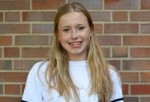Clubs are a crucial part to East and the community that it provides for students. Though these clubs may not have the highest attendance rates, they give students a setting to work with like-minded peers over common interests.
Ethics Club:
It’s not unusual for Ethics Club meetings to be dominated by strong opinions and friendly arguments. This unique group discusses various controversial topics ranging from genetic engineering to the classic train scenario of sacrificing your own life to save others.
Sponsored by Spanish teacher Jennifer Holder, the club is a place where students with ideas — whether those ideas are political, economical or social — have the ability to express their viewpoints in a safe place.
At each meeting, the leaders choose a topic of conversation that’s relevant in society for the group to think about and discuss different aspects of.
The students take turns voicing their beliefs and the objective is to form a collaborative resolution at the end. The monthly meetings are designed as a socratic seminar format — giving students an equal opportunity to share their opinions.
Juniors Lily Utt and Sophie Rice started the group this school year to give students an opportunity to express their ideas in an organized setting.
“We felt like there wasn’t a place to have an open debate about more controversial subjects,” Utt said.
According the Utt, East has clubs for political-based discussions, such as young Republicans and Democrats club, but not any where there’s general discussion on many controversial topics.
Because of the different people that attend the meetings, it’s common for conversations to become heated during some of the more intense conversations.
“The people that come like to be super vocal so they can really express their opinion” Utt said.
Math Club:
For most people, math is a class barely put up with at school — let alone something students want to participate in as an extracurricular activity.
Math Club, sponsored by teacher Christopher Burrows, gives students the chance to work out more difficult equations than they would be able to in school.
But for students like senior Emory Apodaca, founder and president of Math Club, the club is more about the gratification and team aspect that it brings rather than just working out equations.
“Anyone can try [the problems] but most of the time we end up solving them together,” Apodaca said.
A typical meeting consists of eating baked goods supplied by Apodaca and finding challenging math problems for the group to work on, whether that be handing the problems out on paper or just writing them on the board.
According to Apodaca, most of the club’s participants consist of juniors and seniors in Calculus or International Baccalaureate (IB) math, with the occasional sophomore that attends.
Apodaca tries to choose problems that anyone can do while still providing more challenging ones for the Calculus BC or IB math students to try.
“I try to choose [a problem] that anyone can do at any level,” Apodaca said. “And then one that’s calculus-oriented.”
The team is considering going to the Pitt State Math Relays, which would be a change of pace as a more challenge-based competition compared to the more relaxed style they have currently.
STEM Club:
Beginning last year, the goal of STEM Club is to expand on the real-work applications of the STEM (Science, Technology, Engineering and Math) fields taught in school.
Gretchen Raedle, co-president of the club along with Emory Apodaca, felt there was not any kind of club represented at East that was particularly geared towards STEM. At the time of starting the club, Raedle was interested in the STEM field as a career and wanted to expand her understanding and awareness of it by performing experiments.
“When I came back from [an engineering camp], I thought it was something that I’d want to implement at East,” Raedle said.
One of these experiments the club has done in the past is creating Oobleck, a suspension material that can be either a solid or liquid depending upon the way it is held.
When the club does experiments like these, the presidents usually start by going through a slideshow, explaining the procedure the participants will carry out and then applying the topic to a more real-life scale.
According to Raedle, the participants in this club mostly include IB students, with other students joining once they had been reached out to or heard about it.
Related
















Leave a Reply